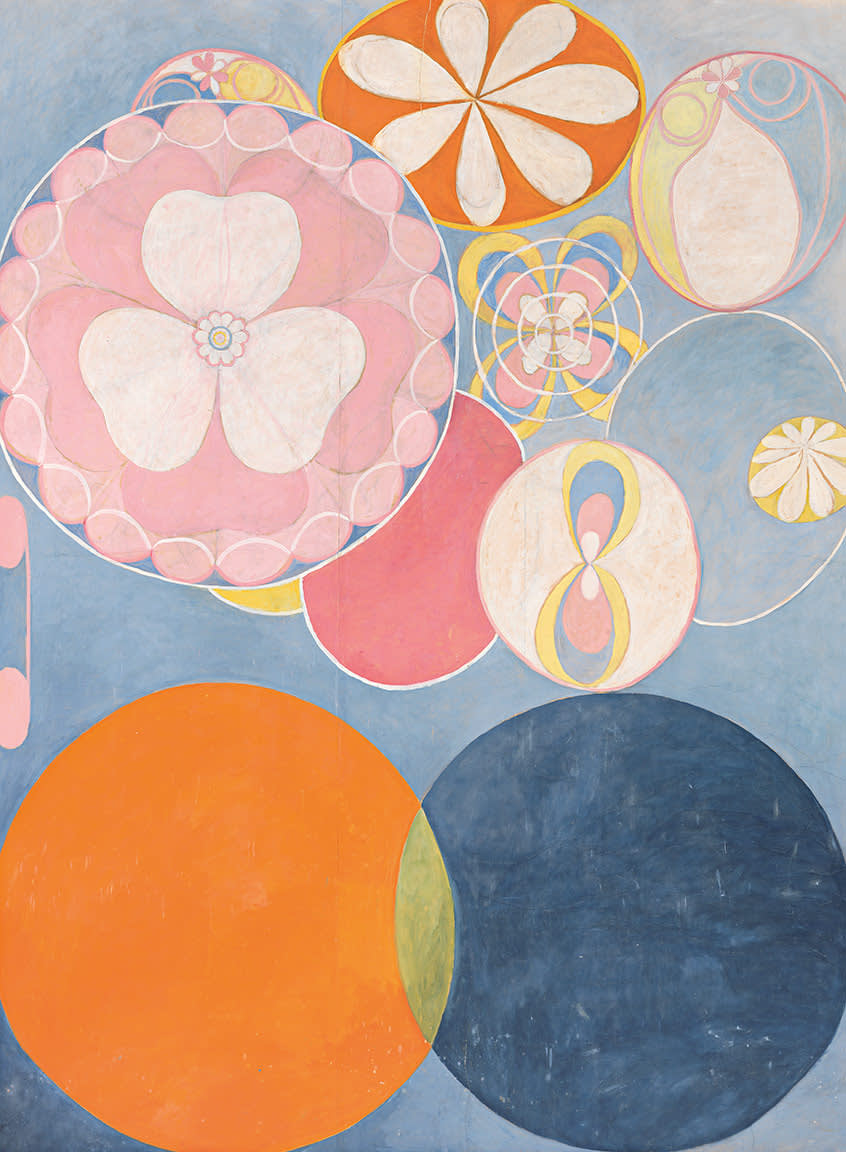Hilma af Klint: Painting for the Future

Hilma af Klint: Painting for the Future
The Guggenheim, New York
Born in Stockholm in 1862, Hilma af Kint began producing strikingly radical abstract paintings just after the turn of the 20th century. Klint’s deftly rendered early works were some of the first examples to rid artwork of any representational context, developing a visual and metaphysical language later adapted by her internationally recognized, widely-exhibited contemporaries. Years before Vasily Kandinsky and Kazimir Malevich took similar strides to void their abstract paintings of any recognizable references to the physical world, Klint unearthed novel artistic techniques through her experimentation with color, form, theme and seriality.
Deeply involved in spiritualism, Klint sought to reconcile religious beliefs and scientific advances through a new abstract vocabulary. Her first major group of nonobjective works from 1906-15, titled ‘The Paintings for the Temple’ demonstrated both her mystical views of reality and her strikingly diverse approach to pictorial composition and color. While the artist envisioned installing these works in a spiral temple, this imaginative plan never came to fruition during her lifetime.




Klint’s renegade, avant-garde tendencies were reflected in both her revolutionary style and approach to presenting her paintings. Rarely exhibited throughout the 20th century, convinced the world was not prepared to understand her vision, Klint stipulated that her work should remain unseen for twenty years following her death; ultimately, her paintings only began to surface in 1986, receiving serious critical acclaim over the subsequent three decades. The Guggenheim presents the first major survey of Klint’s work in the United States, offering art lovers an opportunity to experience Klint’s long-underrecognized artists achievements. A must see exhibit for art lovers looking to discover one of the earliest and primary figures in the world of abstract art.



